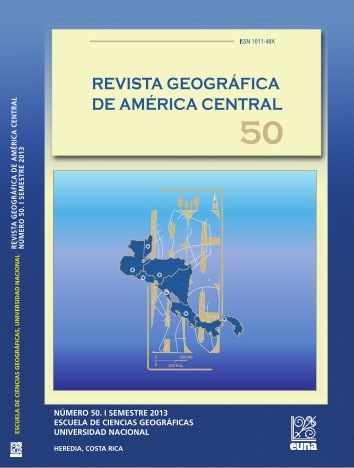AGE-FRIENDLY CITIES: THE CASE OF MALMÖ, SWEDEN
Keywords:
Elderly access, Malmö, Sweden, aging, elderly friendly citiesAbstract
Recent history of cities shows that some social groups, principally the disabled, children and the elderly, have been marginalized. In large part, these groups still have limited access to city infra -structures and services and they often regard cities as being unfriendly places. With regard to the aged, the numbers of elderly are increasing each year, with seniors expected to represent nearly one-quarter of the planet’s population by the year 2050. This study identified five variables of the physical environment of cities that determine their level of friendliness to the elderly and 27 indicators to quantify these variables. An evaluation of these indicators was performed at 54 refer -ence points of the city of Malmö, Sweden in order to arrive at a classification of the city’s degree of elderly friendliness.
References
Barron, L. & Gauntlett, E. (2002). Stage 1 Report –Model of Social Sustainability. Retrieved from: http://www.wacoss.org.au.
Burton, E. & Mitchell, L. (2006). Inclusive Urban Design. British Library
Cataloguing in Publication Data.
Cape City (2011) Noise Management. Retrieved from: http://www.capetown.gov.za/en/cityhealth/envirohealth/Pages/Noise
Capacci, A. y Mangano, S. (2003). Envejecimiento de la población y viviendas para personas mayores en Génova, Italia. Scripta Nova,
VII,(146), pp.130-141.
Doherty, P. (2010). Future Justice. Future Leaders Initiative.
Retrieved from: http://www.sustainable.unimelb.edu.au/content/pages/
what-sustainability-research.
Donoso, R. (2005). Ancianos y Ciudad. Casa Abierta del Tiempo, X, pp.
-34 Recuperado de: http://www.uam.mx/difusion/casadeltiempo.
Ellicott, K. (2002). Cities of the World. Michigan, USA: The Gale Group.
Lee, D. (2006). Designing Cities for the Elderly. Massachusetts Institute of Technology, Boston, United States.
Malmo City. (2010). Skadestatistik För. Malmö Stad.
Retrieved from: <http://www.malmo.se/Medborgare/Kris--sakerhet/Skadestatistik-for-Malmo-stad.html.
Nicholls, S. (2003). Measures of success: measuring park accessibility
using GIS. Retieved from: http://findarticles.com/p/articles/mi_m1145/is_8_38/
ai_108114373/
Organización Mundial de la Salud. (2007). Ciudades Globales Amigables con los Mayores: Una Guía. Departamento de Economía y Asuntos Sociales. New York, USA. Retrieved from: http://www.un.org/esa/
population/publications/ageing/ageing2006.htm.
Pérez, J. (2010). Demografía, envejecimiento y crisis ¿Es sostenible el estado de bienestar? Federación de Cajas de Ahorros Vasco-Navarras,
España.
Ramírez, M. (1996). Más allá de la terapia. Universidad de Costa Rica.
San José, Costa Rica.
Downloads
How to Cite
Issue
Section
License
Proposed policy for journals offering Open Access
Authors publishing their works in the Journal acknowledge and agree to the following terms:
a) Authors retain the copyrights to their works and guarantee the Journal the right to be the first to publish their works, under the Creative Commons License Attribution-NonCommercial-ShareAlike 4.0 International, CC BY-NC-SA 4.0 International (https://creativecommons.org/licenses/by-nc-sa/4.0/deed.es), which allows others to share works upon complying with the acknowledgment of authorship and mention of the Journal as the original publisher of the work.
b) Authors are permitted to separately establish additional agreements for the non-exclusive distribution of the official edition of the work published in the Journal (for example, authors may desire to place the work in an institutional repository or incorporate it into a book that is to published elsewhere) so long they acknowledgment to recognize the Journal as the original publisher. The aforementioned additional agreements must respect the terms of the non-profit character and sharing philosophy of the original license (CC BY-NC-SA 4.0 International, https://creativecommons.org/licenses/by-nc-sa/4.0/deed.es).
c) Authors are encouraged to archive the post-print or editor/PDF version in Open Access repositories.






 REVGEO is licensed under https://creativecommons.org/licenses/by-nc-sa/4.0/deed.es
REVGEO is licensed under https://creativecommons.org/licenses/by-nc-sa/4.0/deed.es
.svg_4.png)

_(1).png)
_(1)_(1)_(1)_1.png)
(2)(1)(1)(1).png)
